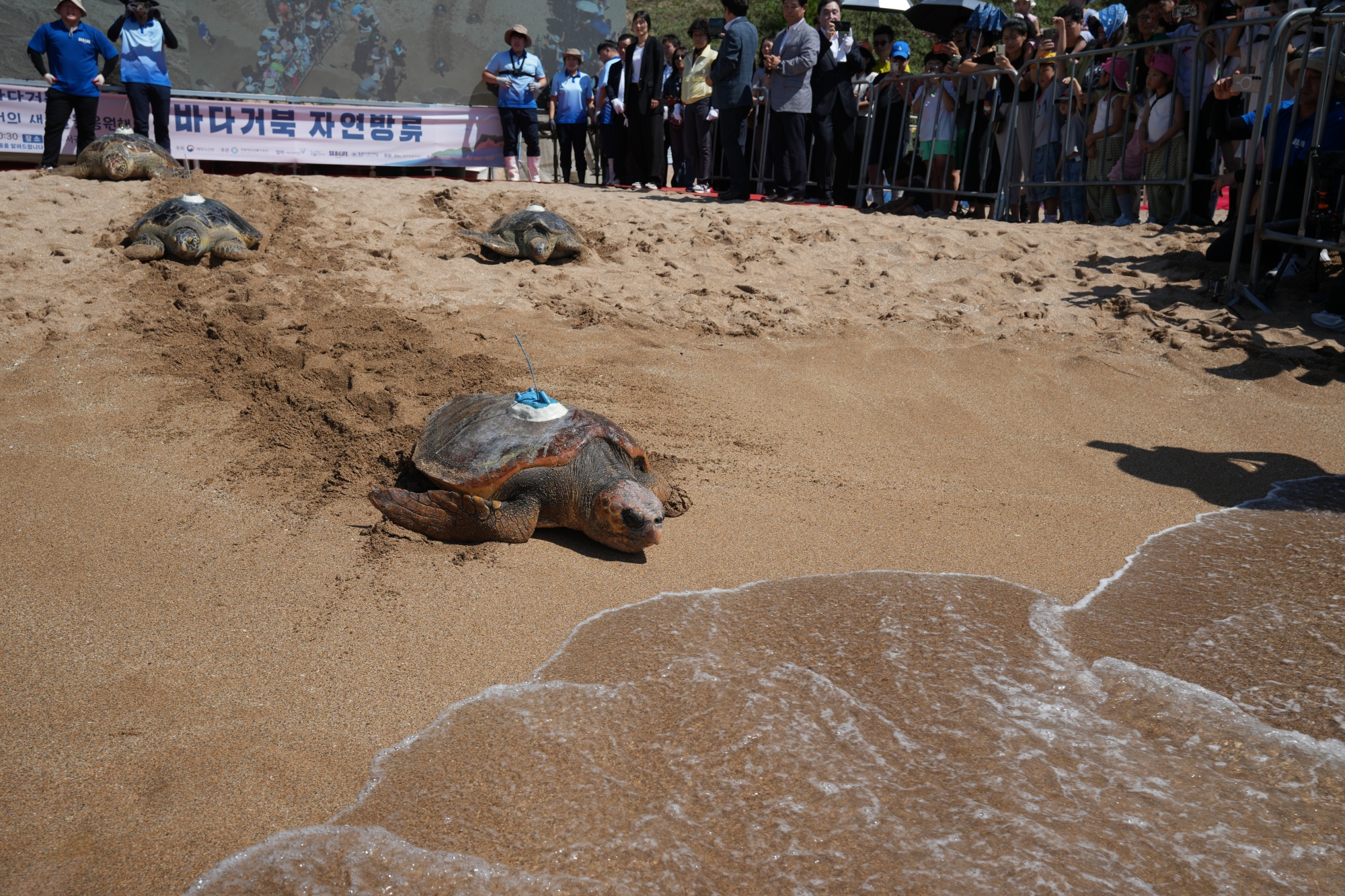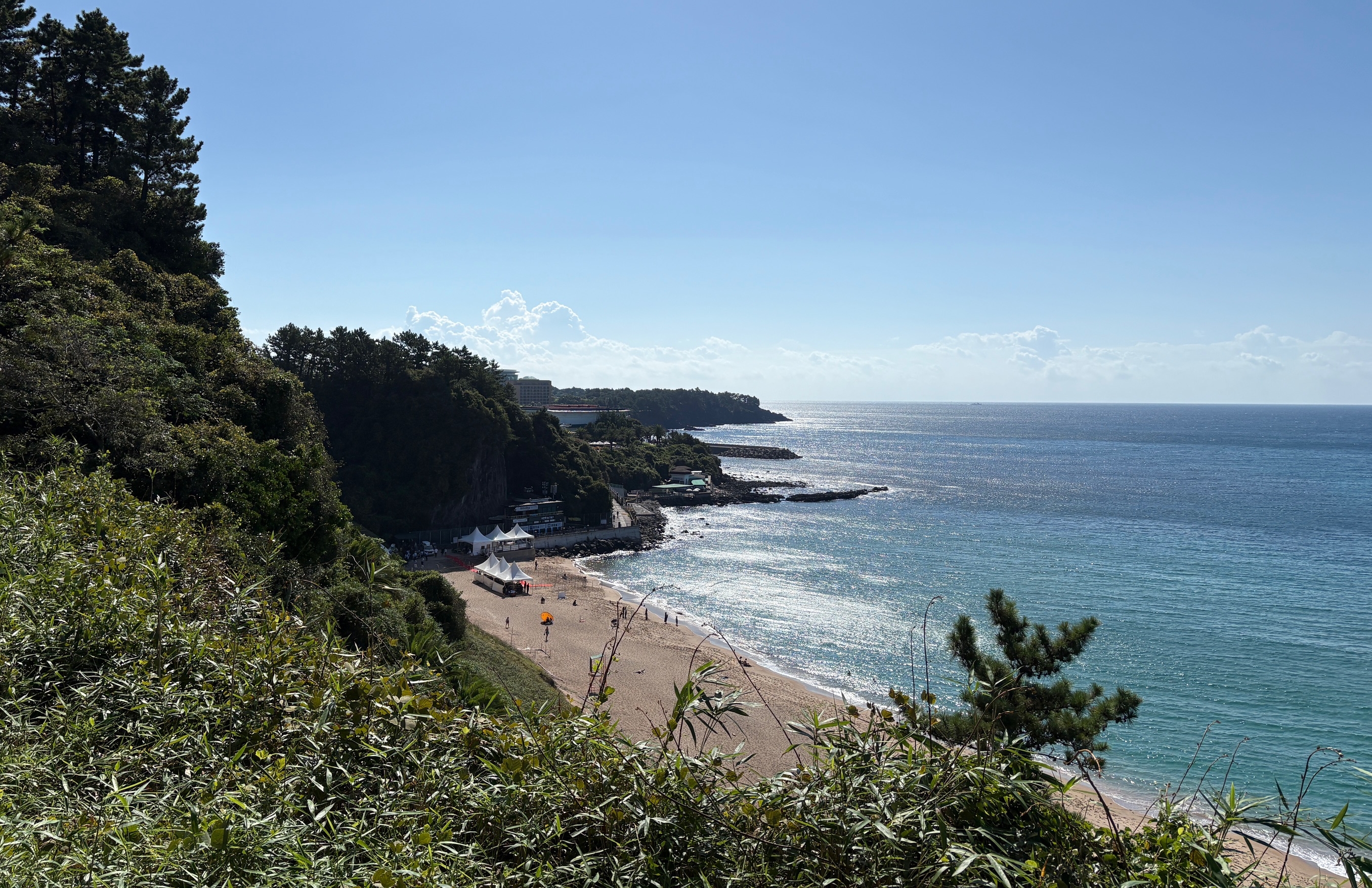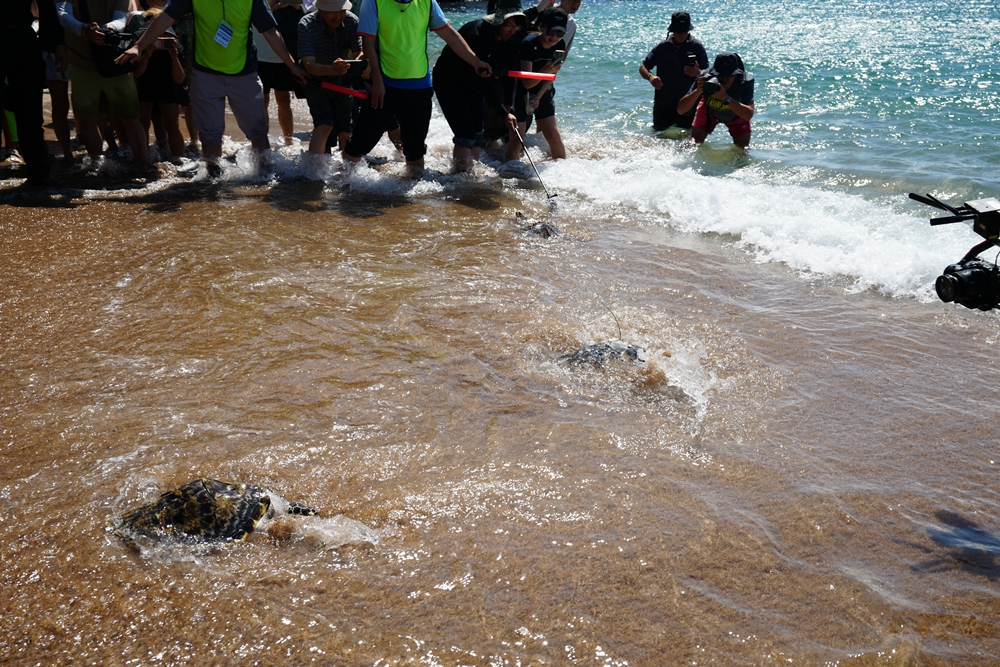- 한국어
- English
- 日本語
- 中文
- العربية
- Español
- Français
- Deutsch
- Pусский
- Tiếng Việt
- Indonesian

A loggerhead sea turtle (front) and two green sea turtles rescued by the Korea Coast Guard and fishermen on Sept. 11 crawl toward the sea on the sandy beach of Jungmun Saekdalhaebyeon Beach in Seogwipo, Jeju Island. (Ministry of Oceans and Fisheries)
By Charles Audouin
"Goodbye and farewell. Let's definitely meet again in good health."
On Sept. 11 at Jungmun Saekdalhaebyeon Beach in Seogwipo, Jeju Island, 13 sea turtles crawled along the sandy beach and began heading toward the blue sea, with onlookers waving goodbye.
The Ministry of Oceans and Fisheries that day held a ceremony to release back into the wild one loggerhead, four green and eight juvenile hawksbill sea turtles that were restored back to health after being rescued. Since 2017, 175 sea turtles have been released there.
The primary habitats of sea turtles are tropical and subtropical waters. Their homing instinct allows them to remember the moment they were hatched on a sandy beach and entered the ocean, and they return to the same beach where they were born years later to lay eggs.
Traces of these creatures have been reported in waters nationwide. A combined 371 have been observed over the past 10 years, and evidence of nesting by sea turtles have been found at the Jungmun beach in Jeju, waters near Opo-ri village in Yeongdeok-gun, Gyeongsangbuk-do Province, and Haeundae Beach in Busan.
The sea turtle is an endangered species worldwide, with the destruction of its habitats rapidly reducing its numbers. All seven species are designated critically endangered by the Switzerland-based International Union for Conservation of Nature.
All five species of sea turtles found in Korea -- green sea, loggerhead, hawksbill, leatherback and olive ridley -- are protected marine species whose unauthorized capture, harvesting, transplant, processing, distribution, storage and damage are strictly prohibited.

This is a photo of Jungmun Saekdalhaebyeon Beach in Seogwipo, Jeju Island, on Sept. 11. The surrounding waters are designated a release site for sea turtles due to low fishing activity and easy access to the Pacific Ocean, their primary habitat, for migration. (Charles Audouin)
The ministry uses policy to protect sea turtles, a prime example being the rescue and treatment of those injured or washed ashore before returning them to the wild.
In collaboration with the Korea Marine Environment Management Corp., National Marine Biodiversity Institute of Korea (MABIK) and the national aquarium chain Aqua Planet, Korea has bred green and hawksbill sea turtles in captivity. After being raised in aquariums for two to three years, they have been released every summer since 2017 at the Jungmun beach, with 126 sea turtles -- 99 green and 27 hawksbill -- returned to the sea as of this year.
Even after returning to the sea, the sea turtles are continuously monitored by marine researchers. MABIK attaches tracking devices to the turtles to analyze their migration routes and readaptation to nature.
Studies have confirmed that select sea turtles released from Korea spend winter in warm waters off the coasts of Japan, China and Vietnam and return to Korean waters in search of food in summer and fall. Some have even been seen participating in natural reproduction.
"We will launch a National Marine Life Information Center by 2027 to supervise the rescue, treatment and health promotion of protected marine species," Minister of Oceans and Fisheries Chun Jae-soo said. "We will make our coastlines a home-like habitat for sea turtles to allow them to naturally spawn again."
"I hope that the 13 sea turtles returned to the sea today will safely cross rough waters and return here someday."

Three hawksbill sea turtles artificially bred in Korea on Sept. 11 are released into the sea at Jungmun Saekdalhaebyeon Beach in Seogwipo, Jeju Island. (Ministry of Oceans and Fisheries)
caudouin@korea.kr